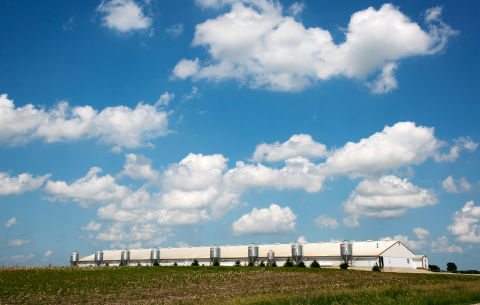



Hard times for hog farmers significantly affect economy
A new study by University of Minnesota Extension researchers shows current and ongoing disruptions in the pork supply chain added to the 15% unemployment rate and could result in an estimated loss of $660 million in economic activity in Minnesota.
Minnesota's hog farmers contribute significantly to the state economy. Researchers Brigid Tuck, Extension senior economic impact analyst, Extension economist Joleen Hadrich and Extension educator Megan Roberts found a 15% drop in hog production would lead to an estimated loss of 2,100 jobs.
The average Minnesota hog farm generates $1.5 million in economic activity. Interruption of hog processing over the summer due to COVID-19 hurt farmers’ ability to sell animals. That’s led to cuts in what they spend on local and regional services such as feed, land rent, truck, and veterinary services. It’s also affected payments on operating loans at area banks.
Meanwhile, hog farmers were already losing money.
Widespread closures and partial closures of processing plants during spring and summer meant there was no market for pigs ready for market. For example, about 45% of hogs that normally would have been processed during the last week of April had no where to go. Resumption of processing and butchering alternatives have helped offset some of the losses, but repercussions are expected to continue.
2019 data and projections moving forward
Minnesota’s 3,562 hog farms range from small family operations to large enterprises. An average farm employs eight people. Minnesota produces more than one-tenth of all pork sold in the United States and ranks second in overall pork exports at $763 million.
In 2019:
- Minnesota had $2.7 billion in annual hog sales.
- Farmers sold 22.3 million hogs, with the average farm spending $891,840 to raise the animals.
- The average farm contributes $203,020 in direct labor income to the state.
- The average operation contributed more than $33,000 in state and local taxes.
Losses mount for farmers
While hog farmers generate considerable economic activity, in recent years they made little profit—or lost money. On average, Minnesota farmers lost 32 cents per animal in 2019.
The 2020 outlook is challenging, at best, especially for independent farmers who own and raise their own livestock. Between March and May, hog prices plunged 26%, from 50 cents per pound pre-COVID-19 to 37 cents in early May, making it essential for independent farmers to develop additional options for selling their hogs.
What can communities and consumers do?
Extension encourages communities to look closely at the pork industry and its impact on local revenue and expenses. Better understanding the industry can help communities plan for getting through the crisis, both in the short and long terms.
Consumers can help stabilize the supply chain by making normal purchases of pork to last a family one to two weeks and be open to buying different cuts.






